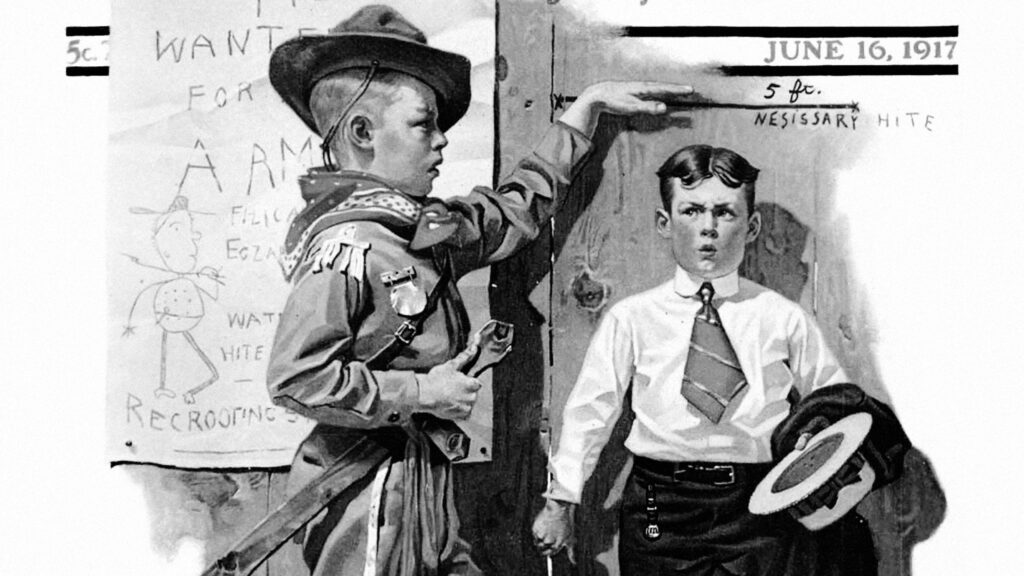This is the first article in a series dedicated to uncovering the traits that define a successful 21st-century leader, according to McKinsey’s model.
The role of a leader has been radically transformed in the modern era. Simply being a leader who sets the direction is no longer enough. Today, we need leaders who combine strategic thinking with empathy and foresight, ensuring the sustainable development and adaptability of organizations.
In their article “The Art of 21st-Century Leadership: From Succession Planning to Building a Leadership Factory” (https://www.mckinsey.com/capabilities/strategy-and-corporate-finance/our-insights/the-art-of-21st-century-leadership-from-succession-planning-to-building-a-leadership-factory?hsid=5065d7f9-9e91-44d5-8379-eb316e06b09a#/ ), McKinsey highlights six defining traits that allow leaders to succeed in the modern world:

- Harmony – the ability to care for one’s well-being while fostering an atmosphere of unity and authenticity within the team.
- Servant leadership – focusing on the collective mission and the development of others, rather than on personal achievements.
- Stewardship – a focus on the long-term perspective and a desire to leave the organization in a better state than it was found.
- Levity – the ability to use humor and positivity to strengthen relationships and stimulate creativity.
- Perseverance – the capacity to withstand pressure, make bold decisions, and emerge stronger from challenges.
- Growth – the ability to turn mistakes into lessons and cultivate a mindset of continuous learning.
In this series, we will examine each of these traits in detail. We begin with Stewardship, the quality that embodies commitment to a strategic vision. This trait is fundamental to building organizations that can endure the challenges of time and stay focused on long-term success.
Who are steward leaders?
The most remarkable leaders see themselves not only as managers but as stewards—guardians responsible for preserving and enhancing the values of the organization. They don’t focus on short-term achievements; instead, they think in terms of the future, striving to leave the organization stronger than it was.
Steward leaders choose the path of long-term vision, resisting the temptation of immediate decisions for the sake of the organization’s sustainability. They understand that the market is dynamic, customer needs are evolving, and leadership challenges are constantly changing. This mindset leads them to build structures that can function effectively even after their tenure ends.
According to McKinsey, the four key traits of steward leaders are:
- The future in control: Leaders have a clear strategic vision and guide the organization accordingly.
- Investment in people: They intentionally develop leadership abilities in their teams and successors.
- A culture of change and innovation: Leaders create an environment that fosters learning, adaptability, and creativity.
- A powerful legacy: They strive to leave the organization much stronger than they found it.
Why is a long-term vision the core of stewardship?
Imagine a leader of a tech corporation who realizes that automation and artificial intelligence are changing the rules of the game. Rather than focusing solely on maximizing short-term profits, they channel resources into creating new products, developing talent, and supporting an innovative culture. Decades later, when the industry transforms, this company will be one step ahead, ready for new challenges, and its employees will possess the necessary knowledge and skills. Steward leaders constantly ask themselves, “What legacy will I leave behind?” This question drives them to integrate current challenges with a future vision, finding the balance between achieving present results and preparing for tomorrow’s changes.
Stewardship is not just strategic thinking—it involves active efforts aimed at creating a resilient organization that can not only survive but thrive in the long term. Steward leaders inspire by example and leave behind organizations that are ready to face the challenges of the future.
How to develop stewardship in yourself?
- Think about the future, not just the present. When making strategic decisions, consider how they will impact the organization in 5-10 years. Creating long-term strategies lays a solid foundation for future success.
- Invest in professional development among colleagues. Investing in learning and professional growth for your team is a future-oriented, strategic approach. It’s not just about transferring knowledge, but also about building powerful, self-sufficient teams ready to face any challenge. Our experience confirms the effectiveness of this approach, so join us and develop your teams together with us. https://a-p-t.org/expertise
- Go beyond the familiar. Stay open to change and keep a close eye on new trends and technologies. Leaders who adapt to change can provide their organizations with a competitive edge.
- Prepare successors. Always think not only about your own role but also about how the organization will function after your departure. Creating a culture of succession ensures sustainable growth and future success.
Stewardship is one of the most crucial qualities of 21st-century leaders, ensuring the sustainable and harmonious development of organizations. Steward leaders think strategically, invest in the future, and strive to leave behind a legacy that far exceeds their personal achievements. They build organizations capable of adapting to changes and thriving under any conditions. In the next articles of this series, we will explore other important traits that define the success of leaders today. Leadership is not just about achievements in the present, but about shaping the future while considering the changes and challenges ahead.
Authors: Mariia Kot, Oleksandra Alkhimovych
Вірність стратегічному баченню
Це перша стаття циклу, присвяченого розкриттю рис, які визначають успішного лідера 21-го століття за моделлю McKinsey.
Сучасна епоха радикально трансформувала роль лідера. Бути лише керівником, що вказує напрямок, вже недостатньо. Сьогодні потрібні лідери, які поєднують стратегічне мислення з людяністю та передбачливістю, забезпечуючи сталий розвиток і адаптивність організацій.
У своїй статті «The art of 21st-century leadership: From succession planning to building a leadership factory» https://www.mckinsey.com/capabilities/strategy-and-corporate-finance/our-insights/the-art-of-21st-century-leadership-from-succession-planning-to-building-a-leadership-factory?hsid=5065d7f9-9e91-44d5-8379-eb316e06b09a#/ McKinsey пропонує шість визначальних рис, які дозволяють лідерам досягати успіху в сучасному світі:

- Harmony (Гармонія) – здатність дбати про власне благополуччя, водночас створюючи атмосферу злагоди й автентичності в команді.
- Servant Leadership (Служіння у лідерстві) – фокус на спільній місії та розвитку інших, а не на власних досягненнях.
- Stewardship (Вірність стратегічному баченню) – орієнтація на довгострокову перспективу й прагнення залишити організацію в кращому стані, ніж вона була.
- Levity (Позитивність і гумор) – уміння використовувати гумор та позитивний підхід для зміцнення взаємин і стимулювання креативності.
- Perseverance (Наполегливість) – здатність витримувати тиск, ухвалювати сміливі рішення та ставати сильнішим після випробувань.
- Growth (Розвиток) – уміння перетворювати помилки на уроки та формувати мислення, орієнтоване на постійне навчання.
У цьому циклі ми детально розглянемо кожну з цих рис. Почнемо з Stewardship – якості, що втілює вірність стратегічному баченню. Ця риса є основою для створення організацій, які можуть витримати виклики часу та зберегти курс на довгостроковий успіх.
Хто такі лідери-стюарди?
Найвидатніші лідери сприймають себе не лише як управлінців, а як стюардів — опікунів, відповідальних за збереження та примноження цінностей організації. Вони не зосереджуються на короткострокових успіхах, а мислять категоріями майбутнього, прагнучи залишити організацію сильнішою, ніж вона була.
Лідери-стюарди обирають шлях довгострокового бачення, відмовляючись від спокус миттєвих рішень заради стійкості організації. Вони розуміють, що ринок динамічний, потреби клієнтів змінюються, а виклики лідерства еволюціонують. Такий підхід спонукає їх створювати структури, здатні ефективно функціонувати навіть після завершення їхньої каденції.
Чотири ознаки лідерів-стюардів за McKinsey:
- Майбутнє під контролем: Лідери мають чітке стратегічне бачення та скеровують організацію відповідно до нього.
- Інвестування в людей: Вони цілеспрямовано розвивають лідерські здібності у своїх командах та наступниках.
- Культура змін та інновацій: Лідери будують середовище, яке підтримує навчання, адаптивність та творчий підхід.
- Потужний спадок: Вони прагнуть залишити організацію значно сильнішою, ніж вона була раніше.
Чому довгострокове бачення — це основа Stewardship?
Уявімо керівника технологічної корпорації, який розуміє, що автоматизація та штучний інтелект змінюють правила гри. Замість того щоб зосередитися лише на максимізації поточного прибутку, він спрямовує ресурси на створення нових продуктів, розвиток талантів і підтримку інноваційної культури. Через десятиліття, коли галузь трансформується, ця компанія буде на крок попереду, готова до нових викликів, а її працівники володітимуть необхідними знаннями та навичками. Лідери-стюарди постійно ставлять собі запитання: “Який спадок я залишу після себе?” Це змушує їх інтегрувати поточні виклики з майбутнім баченням, знаходячи баланс між результатами тут і зараз та підготовкою до завтрашніх змін.
Stewardship — це не лише стратегічне мислення, а й активні дії, спрямовані на створення стійкої організації, яка здатна не лише виживати, але й процвітати у довгостроковій перспективі. Лідери-стюарди надихають своїм прикладом і залишають після себе організацію, готову до викликів майбутнього.
Як розвинути Stewardship у собі?
- Думайте про майбутнє, а не лише про сьогодення. Під час прийняття стратегічних рішень подумайте, як вони впливатимуть на організацію через 5-10 років. Створення довгострокових стратегій дозволяє закласти міцний фундамент для майбутнього успіху.
- Інвестуйте в професійний розвиток серед колег. Інвестування в навчання та професійний розвиток команди — це стратегічний підхід, орієнтований на майбутнє. Це не просто передача досвіду, а й створення потужних, самодостатніх команд, готових до будь-яких викликів. Наш досвід підтверджує ефективність цього підходу, тому приєднуйтесь до нас і розвивайте свої команди разом з нами. https://a-p-t.org/expertise
- Виходьте за межі звичного. Залишайтеся відкритими до змін, уважно стежте за новими тенденціями та технологіями. Лідери, які адаптуються до змін, здатні надавати організаціям конкурентні переваги.
- Підготуйте наступників. Завжди думайте не лише про власну роль, а й про те, як організація буде функціонувати після вашого відходу. Створення культури наступництва гарантує сталий розвиток і успіх в майбутньому.
Stewardship є однією з найважливіших рис лідерів 21-го століття, що забезпечує стійкий та гармонійний розвиток організацій. Лідери-стюарди мислять стратегічно, інвестують у майбутнє та прагнуть залишити після себе спадок, що значно перевищує їхні особисті досягнення. Вони створюють організації, які здатні адаптуватися до змін і процвітати в будь-яких умовах. У наступних статтях цього циклу ми розглянемо інші важливі риси, що визначають успіх лідерів сьогодні. Лідерство — це не тільки про досягнення в теперішньому часі, але й про формування майбутнього, враховуючи зміни і виклики, що попереду.
Автори: Марія Кот, Олександра Альхімович




